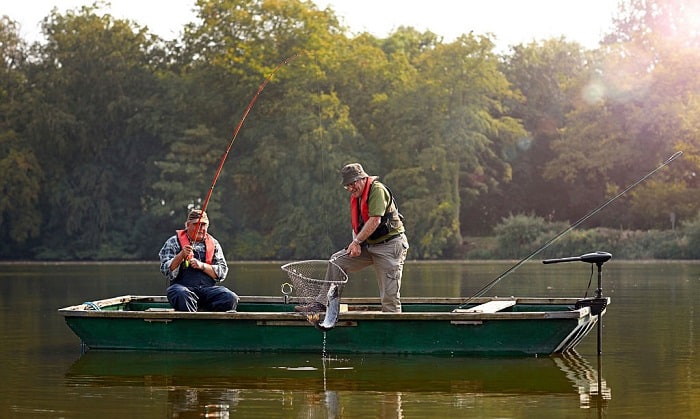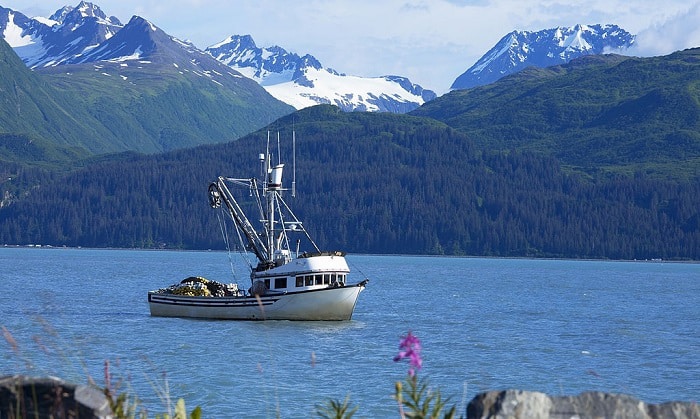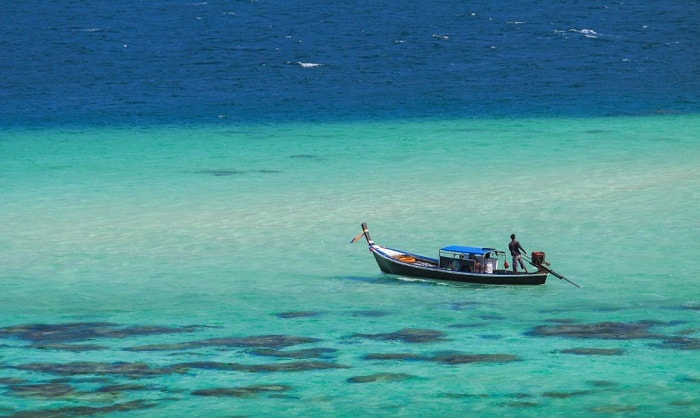Have you ever wondered why experienced boaters always anchor their watercraft at the bow and never at the stern? You might also hear people asking, what is the major danger of anchoring a fishing boat from the stern.
Although it is possible to anchor your boat from the stern, it would be best not to because of safety issues. Learning more about it will make you a better boater, allowing you to enjoy your water adventures more.
Table of Contents
Why It Is Dangerous to Anchor the Boat From the Stern
I have lost count of the number of people who ask me, what would happen if you anchor a boat from the stern? My answer is always the same.
- Anchoring your boat from the stern increases the risk of swamping or filling your boat with water without sinking.
- The ideal boat position for anchoring is facing the wind.
For example, if the wind is blowing from south to north, it would be best to position your watercraft with the bow facing south. This maneuver will place its flat stern portion to the north.
When the wind blows, waves will come from the south. Since the bow has a unique shape that allows it to ‘cut’ through the waves, water will not get into the boat and swamp it.
Now, let us imagine positioning the anchor in the stern. This boat’s section is flat and squarish, making it incapable of cutting through the waves. The water has no recourse but to break and splash onto the boat’s rear portion.
Here is another thing. Your boat’s outboard motor is always at the stern. These marine engines can weigh between 155 and 359 pounds. Add to this the anchor’s weight, which can be from four pounds to 44 pounds (depending on your watercraft’s size).
You are looking at 160 to 400 pounds of weight dragging the boat’s stern, making it easier for waves to splash over and fill this section. It creates an imbalance, forcing the boat’s rear portion to sink lower into the water than it should.
What Other Problems Does Anchoring From the Stern Bring
Swamping is not your only concern when anchoring from the stern. It can also produce other issues you might be ill-prepared to handle.
- Increased strain on the boat’s structures
Manufacturers design boats such that the streamlined bow facilitates smoother airflow around the sides. Dropping the anchor from the flat stern creates turbulence that can strain the boat’s structures.
For example, strong winds can smash and damage the cabin door, rendering it unusable unless repaired. Some of the boat’s critical machinery is also in the bow section. These components can sustain heavy damage if water from the stern reaches this part.
- Catastrophic rudder damage
Two things can result in rudder damage when anchoring the boat from the stern.
First, the fishing boat’s lowered section exposes it to more substantial water pressures hammering the rudder. Strong waves can break the rudder, robbing you of the ability to maneuver your boat. Anchoring your boat from the bow prevents this issue.
Second, your anchor has a rode or line connecting it to the boat. Unfortunately, the anchor cable can snag the rudder and damage it. Not only will you lose navigation capabilities. You might also be unable to retrieve the anchor.
Unfortunately, rudder damage can lead to leaks in the boat, further aggravating swamping and increasing the risk of capsizing.
- Difficulty adjusting the boat’s position
The bow’s streamlined shape allows the water to flow smoothly around the sides, making it easier to maneuver. Unfortunately, you will lose this ability if you secure your boat from the stern. The watercraft can capsize if you cannot correct its position right away.
- Increased risk of capsizing
Structural damage, boat instability, and loss of control can increase the possibility of the watercraft tipping over and capsizing. Although your vessel might not sink right away, you will be at the mercy of the elements. It can be dangerous if you are in stormy waters.
How Should You Anchor Your Boat
As a rule, never anchor your boat from the stern. It is a big no-no to drop the anchor from the boat’s rear unless you do not mind swamping your watercraft and risk sinking it to the bottom. So, how should you anchor your vessel? Here’s how.
- Decide where to drop your anchor by looking for an area with sufficient space. Ideally, the bottom should be muddy or sandy, and the location is well-protected from the elements.
- Maneuver your fishing boat a little further than where you want to stay. And, make sure to always position the bow facing the water current or wind. Hence, you might want to steer your boat so that its bow faces north if the wind or water current is from the south to the north.
- Turn off your fishing boat’s engine and try to stabilize it on the water before you lower the anchor from the bow. The anchor rode’s length should be up to ten times the water’s depth. For example, if you are in 30-foot-deep waters, the anchor line should be 210 to 300 feet long.
- Secure the anchor line on a bow cleat and let your boat drift down current or downwind. Tug the anchor rode to secure the anchor at the bottom.
- Look for objects or structures on the shore to serve as reference markers. There is a chance that your boat might drift with strong winds or current. If you think you moved from the reference point, your watercraft is dragging the anchor.
Conclusion
You now know that swamping is the answer to the question, what is the major danger of anchoring a fishing boat from the stern. It makes sense to always secure your boat from the front end or the bow section because it is more streamlined and lighter than the stern.
Unfortunately, swamping is not your only concern when anchoring a boat from the stern. You also risk damaging the watercraft’s structures, such as the rudder, cabin, and mechanical components. Your vessel also becomes uncontrollable, increasing the risk of capsizing.

Ten years of enjoying countless trips on boats never made me love them any less! So I am here to put all those experiences into good use for other boaters who want to have a safe and fun trip with their friends and families.



